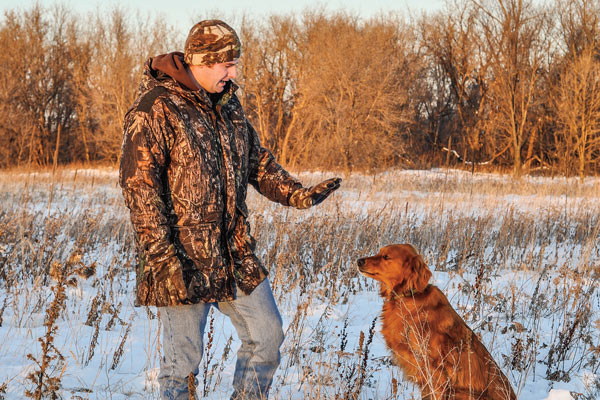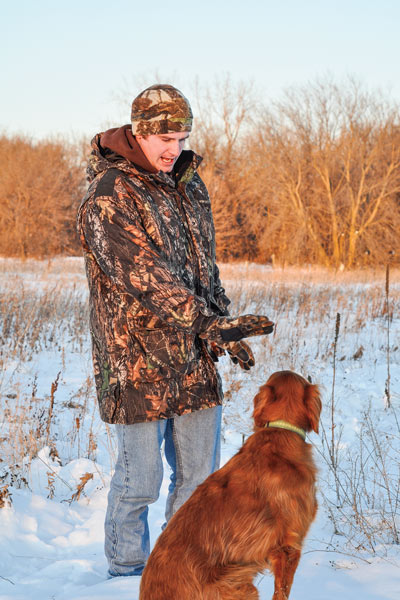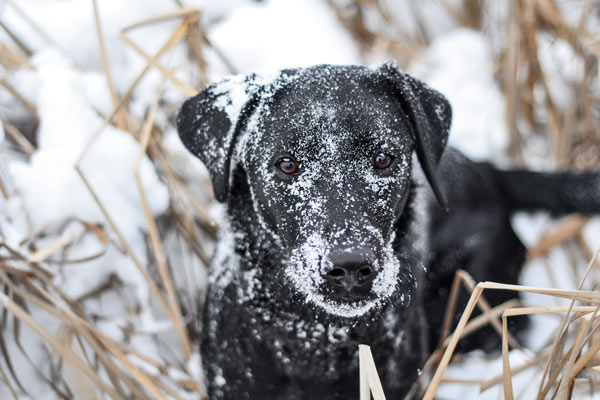February 25, 2015
By Tom Dokken
 Most duck dogs are never further away from serious training than the day the waterfowl season ends. Hunting from early teal to late-season goose means most of our dogs have not engaged in an abundance of training drills for months.
Most duck dogs are never further away from serious training than the day the waterfowl season ends. Hunting from early teal to late-season goose means most of our dogs have not engaged in an abundance of training drills for months.
This is fine as long as you're shooting birds and pup is fetching them up. But remember, instead of leaving the dummies and training gear in the garage next to the decoys after the wingshooting is over for the year, consider developing an immediate post-season training plan.
I can't emphasize enough the value of following up a season with a look back at how your dog performed. Be honest with yourself, and recall both good times and bad. While the best retrieves are more enjoyable to remember, the negatives are those that carry the most value. Did your dog break early from the blind? Lose a bird? Disobey?
Of all of the things you're likely to recall, basic obedience problems are the most likely.
Advertisement
Staying Put
Bird dogs are tasked with learning and following a litany of commands. That's because good owners want to have control of their pups at all times, not just when the dog feels like listening. The No. 1 problem most hunters run into with their dogs during the season is the stay command.
 Getting your dog to heed this directive while training in the backyard is easy, but everything changes when you're sitting in the duck blind or boat and that first mallard hits the water. Any dog worth his salt will want to retrieve it immediately, but letting him break early is a bad idea. This behavior will snowball to the point where it's necessary to go back to basic obedience training.
Getting your dog to heed this directive while training in the backyard is easy, but everything changes when you're sitting in the duck blind or boat and that first mallard hits the water. Any dog worth his salt will want to retrieve it immediately, but letting him break early is a bad idea. This behavior will snowball to the point where it's necessary to go back to basic obedience training.
Advertisement
If my dogs have started to ignore the "stay" command for any reason, I'll retrace my steps back to leash training and then eventually to e-collar work. This may seem counterproductive for a dog that has gone through it all before, but hunting season has a way of eroding some of the work you've put in leading up to the fall.
As my dog starts to heed the "stay" command during every drill, I'll begin to add in distractions with other dogs, dummies, training birds, etc. All of these drills are designed to get my dog to understand sitting and staying are expected at all times, whether we are hunting or not. Eventually, he'll re-learn there are no other options but to sit and wait until he is released.
This is simple but important stuff, and leads to another situation many of us should address, which is our dog honoring another dog's retrieve. If you've been in this situation, you know exactly how difficult a proposition this is. I train for this scenario so I don't have to deal with it in the blind, and if you ever think your dog will run into this situation, you should train for it as well. To do this, simply call up a retriever-owning buddy and run some drills together. This will teach the dog that you're in command at all times, even when the competition is chasing his ducks or dummies.
One thing I've noticed over the last decade, is since I started training my dogs to find shed antlers, I rarely have to worry about post-season obedience. Because as soon as duck season closes, we hunt antlers for four months and I'm in control of my dog every day. If you have an inkling to shed hunt, or engage in any other kind of hunting during the off-season months — do it. There is nothing better than extending your season and working with your dog as much as possible.
Going Long
Another problem you may make note of while reviewing the past season is your dog falling short on a few retrieves. I push long-distance retrieve drills a lot for a very good reason: It's one of the best ways to ensure you never lose a wounded duck. If your dog was a rock star on short retrieves but a dud once a bird sailed beyond his comfort zone, start working on longer retrieves.
At first, this may be open-field work that consists of 50- or 60-yard retrieves, but eventually you'll stretch them out to push 350 or 400 yards. My general rule is to train my dogs to retrieve at least twice as far as I expect them to afield. This ensures they'll be fully prepared to go the distance I need them to when a wounded bird makes a break for it.
Missing Marks
One last thing to recall is multiple retrieves. How did your dog do when two or three ducks hit the water at the same time? If the answer is "not good," then you need to start running double-retrieve drills. I do this by tossing a dummy to my right and then tossing one to the left so they sit at 180 degrees from one another. Initially, they'll both be within 30 or 40 yards, but over time I'll increase the distance.
 This stage, like all beginning stages of training, should be easy enough for the dog to excel right out of the gate. The goal is to give him confidence with each step, and then increase difficulty only enough to challenge him slightly. Over time, you can add in a third dummy that gets tossed straight in front of you. The advantage of this training is that it teaches your dog to always expect there to be another bird to retrieve. This is the mindset you want him to have in the duck blind because quite often there is another bird to retrieve.
This stage, like all beginning stages of training, should be easy enough for the dog to excel right out of the gate. The goal is to give him confidence with each step, and then increase difficulty only enough to challenge him slightly. Over time, you can add in a third dummy that gets tossed straight in front of you. The advantage of this training is that it teaches your dog to always expect there to be another bird to retrieve. This is the mindset you want him to have in the duck blind because quite often there is another bird to retrieve.
Lastly, if your dog obeys hand signals while blind retrieving, try to remember whether he was casting well or not by the end of the season. Often, you'll notice a gradual decline in sharpness of cast as the season winds down. This requires you to work blind retrieves and hand signals as soon as the season closes to bring back the skills your dog possessed at the beginning of the season.
It's easy to remember the good times, which is fine. However if you want next season to be much better than the last, take a little time to recall the negatives. If you develop a good training plan to deal with those shortfalls as soon as you've put the boat in storage and have nothing to do until the snows migrate, you'll be much better off throughout the upcoming duck season.
